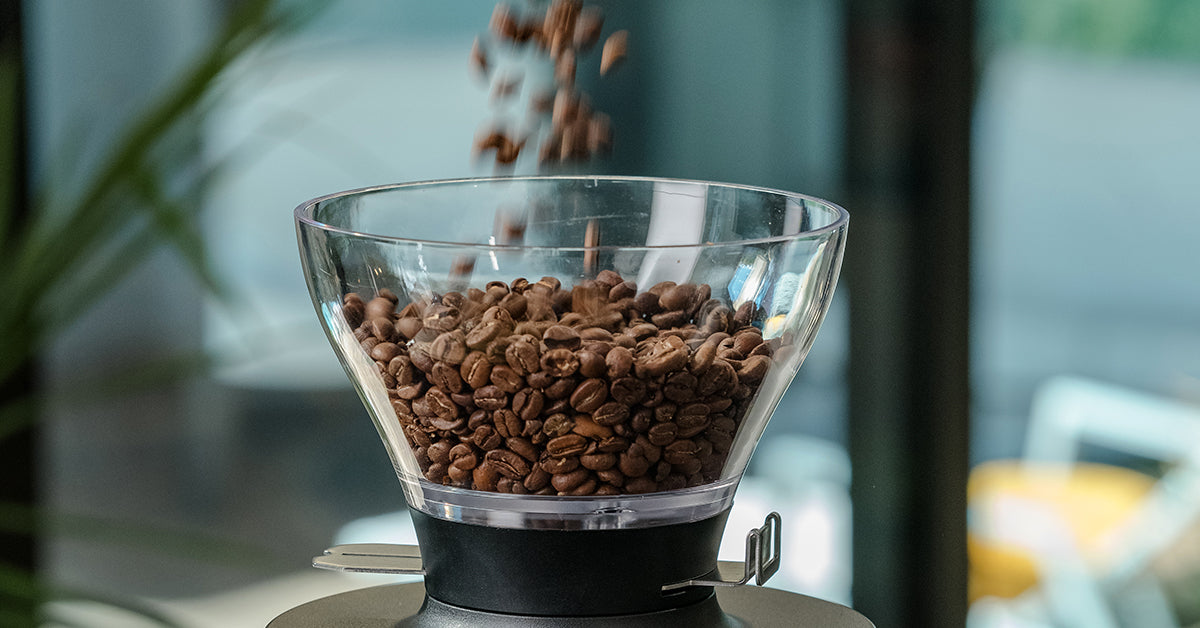To any discerning coffee lover, it’s clear why coffee beans matter when it comes to brewing a consistently delicious cup. However, with so many types of coffee to choose from, it’s no wonder we might pause and think “which one’s right for me?” From grind to roast, there’s a number of factors to consider when looking for the right coffee beans.
In this guide, we discuss some of the differences in taste, region and roasting and why this matters when choosing coffee beans.
Before we get started, here are some basic points to consider before going for any old coffee bean:
- Buying whole beans is better than buying ground coffee. The reason? Ground coffee does not stay as fresh. In fact, the longer you store it, the worse it tastes. It stales over time and affects the overall quality of your brew. In turn, grinding coffee beans at home ensures you’ll have the best-tasting coffee.
- Roast date is crucial if you’re looking to buy a bag of delicious and fresh-tasting coffee. Why? This is due to coffee’s agricultural nature. When picked, roasted and brewed fresh, beans contain sugars and natural oils that give them a very distinct taste. As time passes, these oils and sugars disappear and coffee can become stale.
- Having a quality grinder will guarantee an even grind. We recommend an electric flat burr grinder, like our X54 Allround Home Grinder, for an even more precise grinding and taste experience.
Now, with this in mind, let’s get into some specifics.
Taste and Region
You’ve likely noticed only a few countries pop up on some of your favorite coffee bags. This is no coincidence! Coffee plants need very specific growing conditions to produce their best beans.
Between the Tropics of Cancer and Capricorn, you’ll find the Bean Belt - a zone known for its tropical or subtropical weather that promotes healthy conditions for coffee plants to thrive. Here in this equatorial zone lie Central America, South America, Africa and Southeast Asia. But, what gives coffee its distinct flavor?
Well, external factors like soil, altitude or rainfall (to name a few) will have an impact on coffee beans’ flavor. What this means is, depending on where the coffee beans come from, you’ll discover a range of regional flavors, each as unique as the countries they are from.
Arabica vs Robusta
Of all the different coffee variants in the world, two stand out as most popular: Arabica and Robusta. However, it’s good to spot the differences between the two as you’ll get a different-tasting coffee depending on which bean you choose:
- Arabica coffee plants contain shorter branches and produce fewer coffee cherries, meaning you get a coffee bean packed with nutrients. This leads to more complex flavors with floral and fruity notes. Arabica coffee, in other words, is preferred by specialty coffee makers because of its ability to adapt and its diverse flavor profiles.
- Robusta coffee plants produce many coffee cherries and can withstand many external changes from diseases to climate change. However, because of the number of coffee cherries it produces, the robusta coffee plant contains bitter, nutrient-lacking beans. Robusta coffee beans are more commonly found in lower-quality blends and even instant coffee.
Coffee Roast
The roasting process means the roaster heats the coffee beans, that in the end turns the bean into the brown color we’re so familiar with.
There are several coffee roasts light, medium and dark. These have very distinct flavor profiles - from crisp to smooth, floral to earthy.
Light Roast Coffee
These beans are not roasted for long, but don’t let that fool you! Light roast beans have complex flavor profiles, taste crisp and have a fruity aroma with little bitterness.
Medium Roast Coffee
Medium roast beans have a deeper, sweeter taste (think honey or caramel).
Dark Roast Coffee
Dark roast beans are left in the roasting machine at higher temperatures and longer times. As a result, these tend to lose some flavor during the roasting process. However, dark roasts can be very rich in taste, often compared in bitterness to chocolate or molasses.
If you’re unsure which flavor profile suits you, explore a little. All of these coffee roasts provide incredibly satisfying flavors if ground and brewed correctly. Bear in mind that freshness in taste will depend on roast date and grinding process.
Grinding and Storing
Finally, you’ve chosen your coffee beans and you’re wondering how to keep them fresh. There are a few options:
- If you want to enjoy a fresh cup of coffee, ideally you'll grind only the amount you’ll be using that same day. As we mentioned, keeping ground coffee stored will affect taste, so ensuring you’re using the right amount means you’ll have a fresher tasting cup.
- When storing your coffee, make sure you’re keeping these in an air-tight container. Try to avoid storing your beans in clear containers - if any light gets in, this may compromise taste. The ideal place to store your coffee is away from any bright light or intense heat.
- Do not refrigerate your coffee beans, this will affect taste and moisture levels. If you’re wondering why that is it’s because coffee absorbs humidity from the air. This can happen in your fridge, meaning your coffee will taste of whatever your fridge’s contents are. A safer bet? Freeze your coffee! Just remember never to re-freeze once it’s been defrosted.




